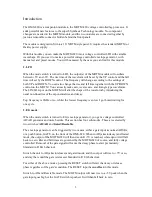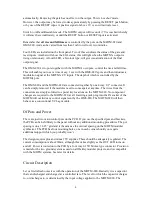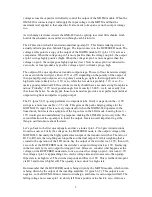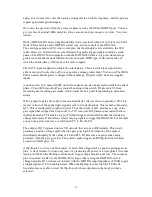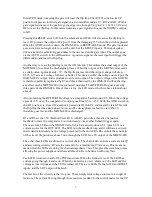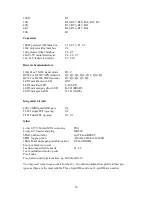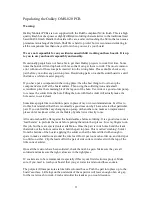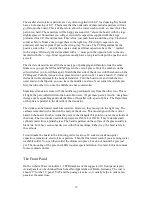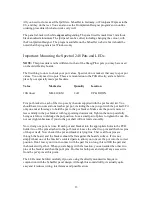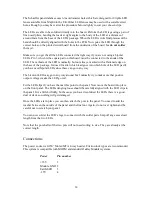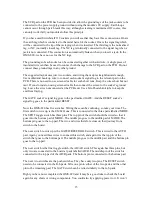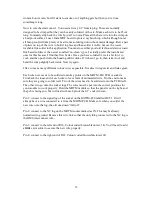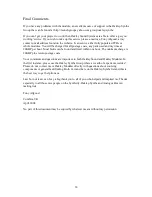
again, as it crosses zero volts, the op-amp swings and the switcher responds... and the process
repeats again and again and again.
Of course, the speed at which the process repeats is set by the UP and DOWN pots. You can
get very fast at around 1000 complete cycles a second, and you can get very slow. Very slow
indeed.
On my MOTM-820 I noticed slight instability in the waveform when driven very fast in LOG
mode. This is feature of the MOTM’s circuit core, and not a fault of the OMS unit.
The envelope generator (EG) is more complex, but the principle is very similar to the LFO
really. However, an EG will not cycle endlessly, but needs trigger signals to initiate certain
phases. The OMS-820 in conjunction with the MOTM-820 form a very powerful envelope
generator, that behaves quite different from your usual ADSR type. It has four modes, of
which the attack-decay (AD) mode is the most complex.
The GATE input is applied to initiate the attack phase. This is a switch type signal that is
either at around 0 volts when off, or any positive voltage greater than 3V when on. The OMS-
820 can easily handle greater voltages without damage. D8 protects Q9 from any negative
inputs.
A push switch, G-S, named GATE on the front panel, can also be pressed to initiate the attack
phase. C4 and R19 smooth off any contact bouncing in the switch. D6 prevents C4 from
smoothing any incoming gate signal, which would not be a good thing leading to unwanted
delays.
When a positive gate arrives, Q9 turns on and pulls its collector down to ground or 0V. This
inverse version of the applied gate signal is sent to two destinations. One is another transistor,
Q12. This is configured as another inverter. Thus the output of Q12 produces a copy of the
gate signal that swings from 0 when off to +15V when on. R35 passes some current back to
the first transistor. This creates a type of Schmitt trigger action which makes the transistors
change state faster. It also allows slowly varying signals to trigger the OMS-820. For example
you can use a slow sine wave or aftertouch CV to fire the EG.
The output of Q12 is passed on to a CR network that acts as a differentiator. This circuit
produces a positive voltage spike when the gate goes high. The duration of the spike is
determined principally by the values of C6 and R23. D5 prevents a negative spike being
produced when the gate goes low. The positive spike triggers an RS flip-flop circuit based
around two NOR gates, U4.
A flip-flop is a sort of a one bit memory, or latch. Once triggered by a positive going pulse at
pin 1, it stays latched. You can only reset it by removing the power or a reset pulse at its other
input, pin 9. When the flip-flop is latched, pin 10 goes high and pin 4 goes low. The output at
pin 10 is passed via R16 to the MOTM-820’s input, thus causing the MOTM to start to
charge upwards. R16 is chosen to interact with the MOTM’s input impedance of 100K to give
an input signal of 7.5V in the high state. When the flip-flop is active the SET LED is lit.
Several sources are able to reset the flip-flop, which one depends on the mode you have
selected.
6
Summary of Contents for MOTM-820
Page 2: ...2...



